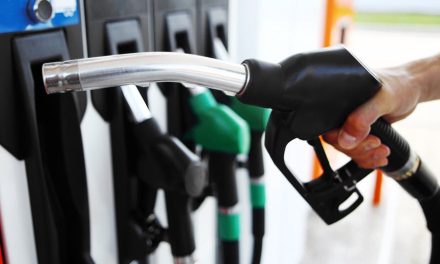U.S. Oil Demand Is Strong; Challenges Ahead
- U.S. petroleum demand hits record
- Distillate demand up 37% week over week
- Omicron dominates headlines
- Natural gas gets support from higher European prices
Sincerely,
Alan Levine, Chairman & Elaine Levin, President
Powerhouse
(202) 333-5380
The Matrix
The oil industry has always been a conundrum. Geopolitical and economic considerations have often been at odds. Conflicts along the petroleum delivery stream among producers, refiners and distributors are part and parcel of price determination. These considerations are no less important today.
The EIA Supply/Demand balance for the week ending December 10 offers many examples of contrary economic evidence. On its face, the report shows an extraordinary level of domestic demand. Weekly Products Supplied were 23.2 million barrels daily. This was an all-time record; it was a 16.9% increase over the previous week. The gain included a 27.5% increase in propane demand and a whopping 36.8% gain in distillate fuel oils.
A smoother four-week average nonetheless recorded substantial demand growth. Total product supplied averaged 21.3 million barrels daily, a 12.6% year-on-year gain. Gasoline demand reflected a re-opened economy, showing a 15.4% increase. And a resurgent aviation industry used 1.5 million barrels of jet fuel, a 27.3% increase over last year at this time.
All these requirements should be expected to present as higher prices. But that has not been the case. RBOB prices have not been able to move above $2.18 and $2.33 has been a formidable barrier to gains in distillate fuel oils. At writing, both products are under pressure. More bearish economic news could easily lead to a break of $2.00.
There is plenty of bearish news to be considered. The emergence of the Omicron variant has led to overwhelmed hospitals and lockdowns, particularly in Europe. Elsewhere, China’s economy is slowing. Bloomberg reports China’s annualized growth ground to a halt, gaining only 0.8% in the third quarter. China has typically been recording growth in the 6% range.
Germany appears to be on the brink of recession. Supply bottlenecks and resurging COVID have tempered growth. European economists believe that “Europe’s largest economy will shrink 0.5% in the fourth quarter of this year, compared with the third, and stagnate in the first three months of 2022.
Supply/Demand Balances
Supply/demand data in the United States for the week ending Dec. 10, 2021 were released by the Energy Information Administration.
Total commercial stocks of petroleum fell 15.9 million barrels during the week ending Dec. 10, 2021.
Commercial crude oil supplies in the United States decreased by 4.6 million barrels from the previous report week to 428.3 million barrels.
Crude oil inventory changes by PAD District:
PADD 1: Plus 0.1 million barrels to 7.9 million barrels
PADD 2: Down 0.7 million barrels to 113.7 million barrels
PADD 3: Down 3.8 million barrels to 234.1 million barrels
PADD 4: Plus 0.2 million barrels to 24.1 million barrels
PADD 5: Down 0.3 million barrels to 48.5 million barrels
Cushing, Oklahoma, inventories were up 1.3 million barrels from the previous report week to 32.2 million barrels.
Domestic crude oil production was UNCH from the previous report week at 11.7 million barrels daily.
Crude oil imports averaged 6.471 million barrels per day, a daily decrease of 28,000 barrels. Exports increased 1,375,000 barrels daily to 3.645 million barrels per day.
Refineries used 89.8% of capacity; UNCH from the previous report week.
Crude oil inputs to refineries decreased 115,000 barrels daily; there were 15.670 million barrels per day of crude oil run to facilities. Gross inputs, which include blending stocks, fell 7,000 barrels daily to 16.280 million barrels daily.
Total petroleum product inventories rose 4.4 million barrels from the previous report week.
Gasoline stocks decreased 0.7 million barrels from the previous report week; total stocks are 218.6 million barrels.
Demand for gasoline rose by 509,000 barrels per day to 9.472 million barrels per day.
Total product demand increased 3,354,000 barrels daily to 23.191 million barrels per day.
Distillate fuel oil stocks decreased 2.9 million barrels from the previous report week; distillate stocks are at 123.8 million barrels. EIA reported national distillate demand at 4.896 million barrels per day during the report week, an increase of 1.318 million barrels daily.
Propane stocks decreased 2.4 million barrels from the previous report week; propane stocks are at 70.9 million barrels. The report estimated current demand at 2.060 million barrels per day, an increase of 444,000 barrels daily from the previous report week.
Natural Gas
Natural gas economics have been stronger than those of liquids. Henry Hub prices fell to $ 3.63 on Dec. 6, and have since traded in a range, unable to top $4. An attempt to break to new lows was defeated on Dec. 20 when prices recovered, reflecting prices surging in Europe. Swaps for East Asian LNG cargoes moved higher as well.
Prices in Europe approached all-time highs. This reflected cuts in supply on the Yamal line, line-filling on Nord Stream 2, and unseasonable cold in Russia. Some observers point to a geopolitical component in the Russian supply constraint. Russia is concerned with the competition from LNG and energy from renewables. It may be using its market power to dissuade the use of these alternatives.
According to the EIA:
The net withdrawals from storage totaled 88 Bcf for the week ending December 10, compared with the five-year (2016–2020) average net withdrawals of 114 Bcf and last year’s net withdrawals of 118 Bcf during the same week. Working natural gas stocks totaled 3,417 Bcf, which is 64 Bcf lower than the five-year average and 326 Bcf lower than last year at this time.
Was this helpful? We’d like your feedback.
Please respond to [email protected]
Powerhouse Futures & Trading Disclaimer
Copyright 2021 Powerhouse Brokerage, LLC, All rights reserved










